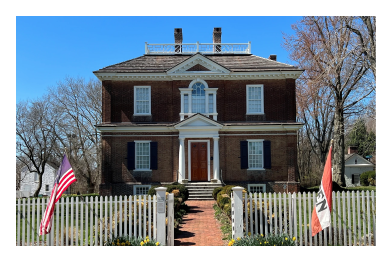Woodford
3400 West Dauphin Street
East Fairmount Park
Philadelphia, PA 19132
United States
Woodford
Woodford

William Coleman (1704-1769) was a Quaker merchant, judge of the Supreme Court of Pennsylvania, and friend of Benjamin Franklin. He was active in many of Franklin’s projects, including the Library Company, the American Philosophical Society, the College of Philadelphia (later the University of Pennsylvania), and the Philadelphia Contributionship.
In 1756 he bought twelve acres of land on high ground overlooking the Schuylkill River—a relatively small parcel that was intended for a summer retreat rather than a working farm. Over the next two years. Coleman built a small, one-story brick house with pilastered corners and vigorous mid-Georgian details. It forms the ground floor of the present house.
Upon Coleman’s death, the property was owned briefly by Alexander Barclay, Comptroller of His Majesty's Customs, before being purchased in 1771 by his brother-in-law David Franks (1720-1794), a prosperous Jewish merchant and land speculator. In 1772 Franks added the second floor and the rear el, which contains a graceful stair. The memory of the original roofline is preserved in the pent roof that wraps around the house, and the details of the addition match those of the older parts. Although small, with only two rooms on each floor, Woodford has a powerful presence, with a two-story, double-pedimented centerpiece, made up of the column-flanked doorway and second-story Palladian window.
Documentation shows that both Coleman and Franks were served by enslaved Africans at Woodford. Coleman freed his three servants in his will, giving each 20 pounds and arranging for their children to be apprenticed. Franks, a sometimes trader in enslaved workers, advertised on several occasions for the return of escaped servants.
Because Franks was a loyalist, he was arrested and ordered to leave the city in 1778, and Woodford was confiscated and ultimately acquired by Isaac Wharton. In 1869 the city bought the house from Wharton's heirs to add to Fairmount Park, which used it as a staff residence and police station.
In 1927, the house was placed under the care of the trust established in the will of Naomi Wood (1871-1926). Restored and opened in 1930, the house is furnished with Wood’s exceptional 17th-, 18th- and early 19th-century decorative and fine art. The collection of 18th-century Philadelphia-made furniture is especially noteworthy.